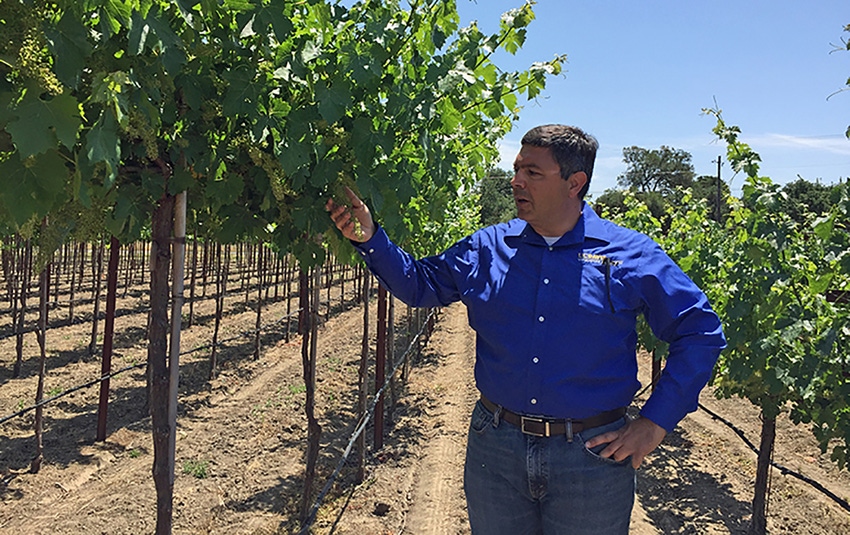
A lot of things have changed as a result of the COVID-19 pandemic and one of them that really hits close to home came in editorial form from the March issue of the National Grape Research Alliance in Sacramento.
“Grape Research Goes on Hold” was the headline written by NGRA President Donnell Brown who noted: “The pandemic will certainly have far-reaching impacts on the world including the volume and pace of research. As shelter-in-place orders went out, academic conferences were cancelled, agencies and universities closed their campuses, and laboratories were ultimately shuttered.”
Somewhat softening that frightening slamming-of-the-door sound, Brown did note, “Vital plant populations such as experimental vineyards and USDA germplasm collections will seemingly be maintained during the crisis.”
Concurrence of that thought was echoed by the Vice Chancellor for Research at University of California, Davis in a memo on reduction of on-campus research activities. Prasant Mohapatra, in supporting the importance of retaining critical research assets for long-term progress, wrote: “This is not a shutdown of research at UC Davis. Rather, we expect much of the research we accomplish during this time period will be conducted remotely. Researchers have been asked to ramp down non-critical research.”
As it pertains to ongoing viticulture and enology research, continuation will be supported for “care and maintenance of plant populations hard to recreate and that represent decades of research” as well as “long-term experiments where there would be considerable cost or time associated with a premature end.”
Similar sentiments were promulgated by research coordinators at Cornell University, Washington State University, and others whose work involves long-term projects that include preservation of integral plant or tissue samples.
Wrote Brown: “Across the board, scientists are scrambling to bottle research wines ahead of schedule and collect plant tissue samples they can analyze remotely.”
A silver lining?
In looking for positives among chaotic conditions, the grape research leader asked, “Could there be a silver lining in the pandemic for scientists?” answering her own question with a qualified, “Maybe."
“We could see a host of new papers detailing research that scientists never had the time before to write up. Plus, with the cancellation of conferences, researchers are finding alternative ways to share their work and interact with collaborators. And without travel to traditional in-person meetings, the carbon footprint of the academic community could be reduced.”
Brown wraps up her thoughts by enclosing a poll of ‘big thinkers’ reported in Politico about how the crisis could reorder society. “Among the predictions are comments like ‘science reigns again,’ ‘a return to the faith in experts,’ and ‘revived trust in institutions.’ We can only hope.”
Since 2008, NGRA has been instrumental in generating more than $45 million for grape research involving four theme areas leveraged to target needs for further study. NGRA-supported projects involve multi-disciplinary, multi-institutional, multi-state collaboration on topics that no single grape sector could adequately address on its own.
The four spotlighted research areas are Natural Resources and Environment (with a focus on water use and sustainability, remote sensing for monitoring vine and soil water status, soil health and sustainability, and climate change); Integrated Production Systems (agronomics, sensors for improving production efficiency, vineyard design, mechanization, and improved pest- and disease-management systems); Genetics and Grapevine Improvement (genomics, traditional breeding, marker-assisted selection, cultivar and clonal selection, and disease-free plant materials), and Extension and Outreach (supporting national and regional objectives that ensure research is put into practical application).
For more news on pests, disease management and other issues affecting vineyards, subscribe to the bi-monthly newsletter The Grape Line.
About the Author(s)
You May Also Like




